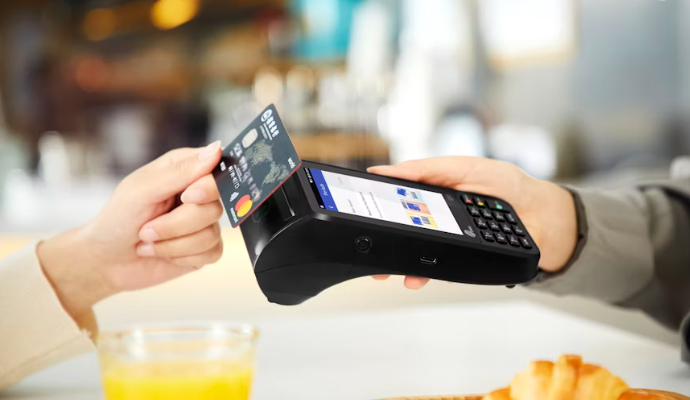Across the globe, cash is losing ground. Paying at a store, ordering dinner, or sending money to a friend is now as easy as tapping a phone or scanning a code. We’re watching a shift from old-school cash to digital payments that’s hard to miss. For both businesses and consumers, this shift isn’t just about swapping dollar bills for screens—it’s changing expectations, routines, and even what’s possible in buying and selling. Let’s break down how digital payments are reshaping our daily habits and business playbooks.

Understanding the Digital Payments Revolution
Digital payments are financial transactions that happen with electronic devices, not physical money. They cover a range of options:
- Credit and debit cards
- E-wallets (like PayPal or Venmo)
- Mobile payment apps (such as Apple Pay and Google Pay)
- Direct bank transfers
- Cryptocurrencies, led by Bitcoin and Ethereum
As internet access spreads and smartphones become standard, digital payments surge. The World Bank reported that more than 76% of adults globally had a bank or mobile money account in 2021, up from 61% in 2014. In the United States, over 81% of Americans made an online or mobile payment in the past year. China leads with cashless transactions, while even cash-heavy cultures are joining in fast.
Key Drivers Behind Digital Payment Growth
Several forces push digital payments forward:
- Smarter Tech: Smartphones, NFC chips, and secure cloud systems have made digital payments fast and simple.
- Changing Behaviors: After the pandemic, people now avoid touching cash or devices in stores, picking contactless payments instead.
- Financial Support: Banks and startups both roll out friendly apps and support, making it easy to pay and get paid anywhere.
Overview of Popular Digital Payment Methods
So, what options do people and companies use most? Here’s a snapshot:
| Payment Method | How It Works | Best For |
|---|---|---|
| Contactless Cards | Tap or wave to pay | Fast retail purchases |
| Apple Pay / Google Pay | Tap phone/watch to pay | In-store, transit, e-commerce |
| PayPal / Venmo | Send/receive in-app funds | Peer-to-peer and online shopping |
| Cryptocurrencies | Blockchain transactions | Tech-savvy, cross-border payments |
Contactless credit and debit cards are becoming the default at checkout lines. Apple Pay and Google Pay put digital wallets on everyone’s phones and watches. PayPal and Venmo still lead for both peer-to-peer payments and paying online. Meanwhile, cryptocurrencies grow in popularity for their low fees and ability to skip traditional banks, but mainstream use is still forming.
Impacts on Businesses and Consumers
Digital payments are more than new gadgets; they bring real change for sellers and buyers.
Benefits and Opportunities for Businesses
Switching to digital payments opens several doors:
- Quicker checkouts: Transactions are fast, which cuts lines and boosts sales.
- Wider reach: Stores can sell to anyone, anywhere, not just people carrying cash.
- Rich data: Sales stats provide insights on most popular items and customer habits.
- Happy customers: Shoppers expect payment options that fit their lives—contactless, app-based, or even pay later.
Loyalty programs also tie into payment apps, making rewards automatic and reducing marketing guesswork.
Challenges Businesses Face with Digital Payments
While the perks are clear, the path isn’t always easy. Businesses face:
- Setup costs: New terminals and software can cost more upfront.
- Cyber-attacks: Hackers target payment data, pushing stores to update security and train staff.
- Regulations: Rules can differ by country, so sellers must keep up to avoid fines or bans.
Staying ahead means tech upgrades and constant learning, not just a one-time fix.
How Consumers Benefit from Digital Payments
For shoppers, digital payments often mean:
- Less waiting: Pay in seconds with a tap or scan.
- Easy tracking: Phones and apps keep receipts and spending info handy.
- Rewards at hand: Loyalty points or cash-back bonuses add up automatically.
- Safer wallets: Lost cards or cash can be a pain, but digital wallets offer quick freeze or remote wipe functions.
Digital payments shrink the hassle of cash and put the power of purchase in your pocket.
Consumer Concerns and Security Risks
Still, not everyone is fully on board—and with good reason.
- Privacy worries: Data leaks can expose personal or account details.
- Fraud: Scams and phishing attacks try to trick users.
- Generational gaps: Not everyone is comfortable with new tech, especially older adults.
- Access: Some rural or low-income areas have limited internet, hindering full adoption.
Awareness and education help ease these risks, but they don’t vanish overnight.
Conclusion
Digital payments are rewriting the rules for how we buy and sell, reaching every part of the world and nearly every type of transaction. For businesses, new payment options spark growth and more ways to collect insights, but staying secure and compliant isn’t simple. For consumers, speed and convenience are now expectations, balanced with the need to stay safe from scams and protect privacy.
The move away from cash is only gaining steam. As more people get online and new tools appear, digital payments will keep creating new ways to connect buyers and sellers. Keeping up with these trends isn’t just smart for business and daily life—it’s becoming necessary. The future of payments is digital, and it’s arriving faster than ever.